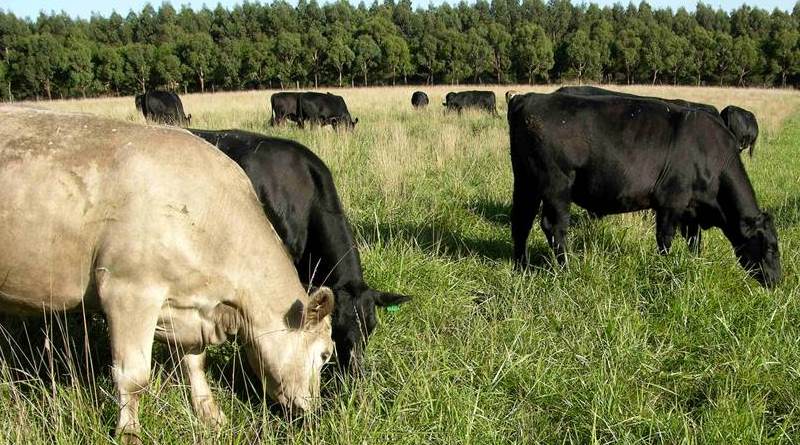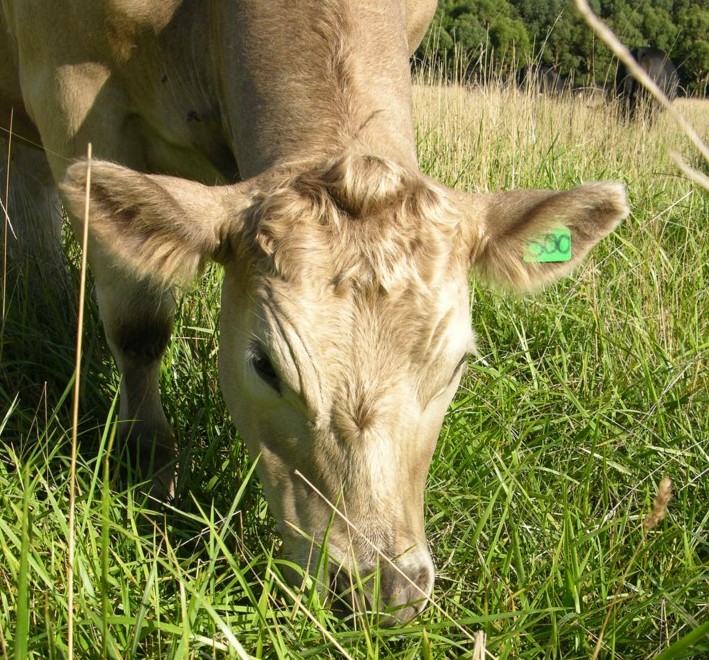Soil carbon trading credits questionable on perennial pasture farms
By Patrick Francis
Scientific evidence is emerging in south eastern Australia, that the soil carbon benefits of livestock grazing perennial pastures are realised in outcomes which improve holistic soil health and livestock productivity and reduce methane emissions, rather than as potential revenue from trading soil carbon credits. Even in the cropping zone, where soil carbon has been depleted due to a long history of ploughing, holistic soil health is the imperative driving practice change over the last 30 years.
Over the past decade the potential opportunity to trade in soil carbon credits has been promoted in some farming circles as an additional reason to improving soil health for farmers to change methods. This approach received impetus in 2017 when the Emissions Reduction Fund as well as the private carbon market accepted a soil carbon methodology as a carbon trading mechanism.
Subsequently, some regenerative agriculture supporters and soil carbon project developers have been promoting soil carbon trading as a viable alternative income avenue for Australian farmers across the perennial pasture livestock grazing and cropping zones, Figure 1.

Figure 1: Since the Emissions Reduction Fund accepted a soil carbon methodology a number of businesses have started promoting soil carbon credits as an additional farm income source. Source: Regenerative Australian Farmers flyer.
The one fact that agricultural scientists and farmers who understand soil health agree upon, is management that increases or maintains soil carbon, is the number one priority of farming practice.
The different farm practice options that maintain or increase soil carbon have been studied by Australian agricultural scientists and adopted by farmers over many decades, table 1. What table 1 demonstrates is the wide variability in confidence about soil carbon outcomes across and within farming systems. This highlights the complex interactions between soil carbon and paddock ecosystem functions.
The challenge for agricultural science surrounding increasing or maintaining soil carbon, is to provide farmers with knowledge that gives them confidence that the practices being recommended will achieve the desired outcomes under their individual soil type, climate, enterprise and business circumstances.
The imperative for this stems from an avalanche of “armchair” journalists, vested interest business owners, and some well-intentioned farmers armed with ideologies promoting practice change outcomes which impact soil carbon sequestration to an extent which is likely to be far in excess of the on-farm reality. The suggestion being, that not only is increasing soil organic carbon good for on-farm ecosystem functions, livestock and crop productivity but it will also return a direct income through generation of significant quantities of carbon credit units per hectare.
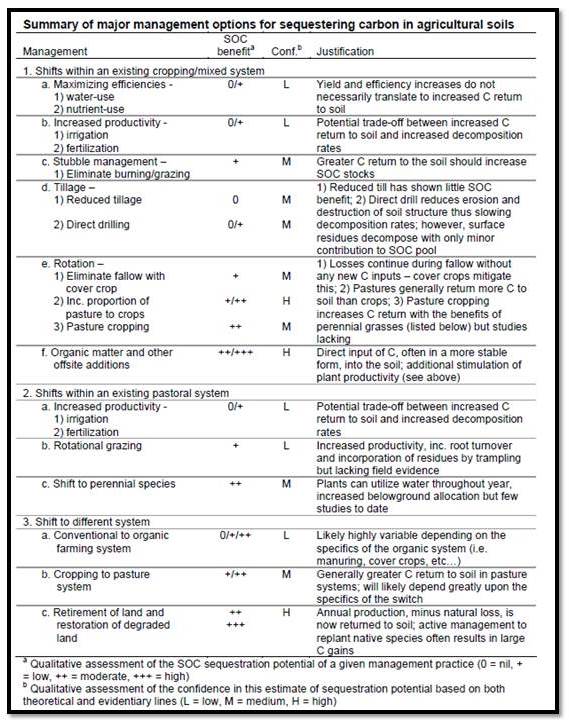
Table 1: The likely soil organic carbon improvement and confidence in it happening in different farming and land management strategies. Source: Soil Carbon Sequestration Potential: A review for Australian agriculture, J Sanderman et al CSIRO Land & Water 2010.
Recent research is to starting to uncover facts surrounding soil carbon credits which suggests the optimism around their credit value in some pasture farming situations, is unwarranted. Researchers at the University of Melbourne under the supervision of Professor Richard Eckard, director Primary Industries Climate Challenges Centre, are demonstrating that on long-term perennial pasture farms where soil is seldom disturbed, additional soil carbon sequestration is difficult to achieve. On these farms practices which preserve soil carbon are the priority in order to maintain current carbon stocks.
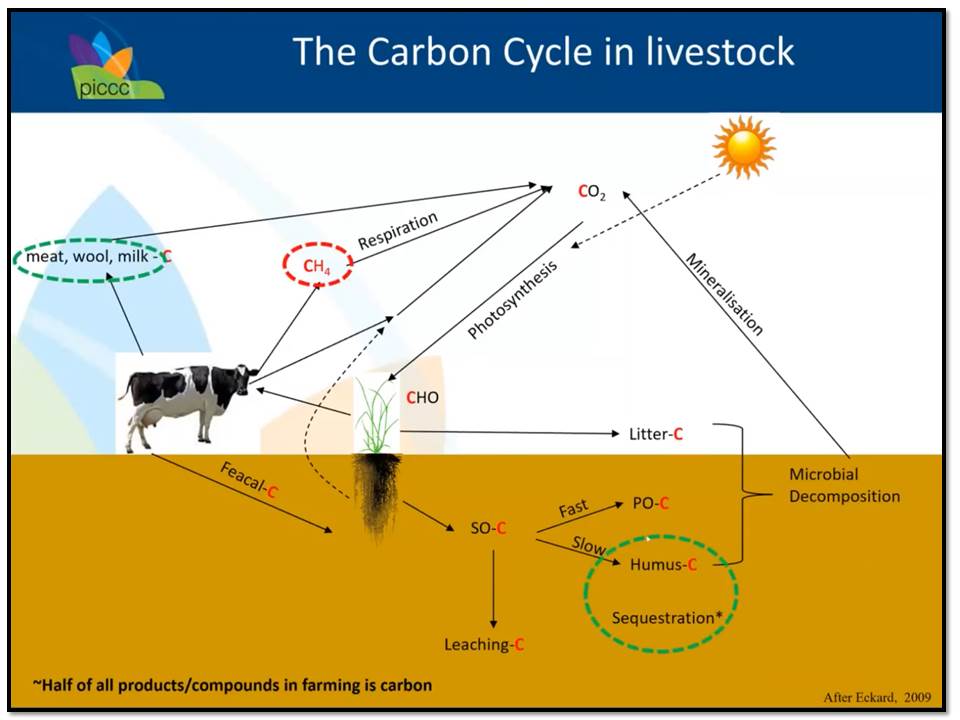
Figure 2: The carbon cycle in livestock grazing pastures. Source: Richard Eckard webinar October 2019.
By adding in revegetation through farm forestry and conservation plantings, these perennial pasture based farms can become carbon neutral or even positive (that is, they sequester more carbon than is emitted via methane and nitrous oxide).
A revegetation program also helps higher livestock productivity farms with carrying capacities above 14 dry sheep equivalents per hectare per year (DSE/ha/yr) to remain carbon neutral. That’s because the extra carbon stored in vegetation balances the higher emissions produced per hectare from more livestock. But according to Eckard “the day of reckoning will come – the law of diminishing returns tells us that soil and tree carbon cannot accumulate indefinitely, but emissions (from livestock) do.”
In the same way that soil carbon provides holistic benefits to soil health, revegetation has multiple ecosystem services benefits such as increased biodiversity, improved landscape amenity, and better livestock welfare. Such ecosystem services are becoming increasingly valued by society and have potential to financially reward farmers via land stewardship, biodiversity tender schemes and food and fibre brand marketing.
But the carbon neutral or carbon positive farm story is likely to become more complicated. The reason why was raised in October 2019 by Eckard during an Agriculture Victoria sponsored webinar. Firstly he said concern is emerging amongst climate scientists that livestock methane (CH4) and soil nitrous oxide (N2O) production cannot be simply offset via the unrelated mechanism of sequestering carbon dioxide (CO2) from the atmosphere as carbon in vegetation and soils.
Secondly, Eckard pointed out carbon offsets in trees and/or soil are short term as storage equilibrium is reached in the medium term. For example in a UK trial soil organic carbon level has been measured since 1855, figure 3. In the pasture plots managed for SOC by annual additions of farm manure, the SOC reached an equilibrium around 1900 and despite further manure application has not increased.
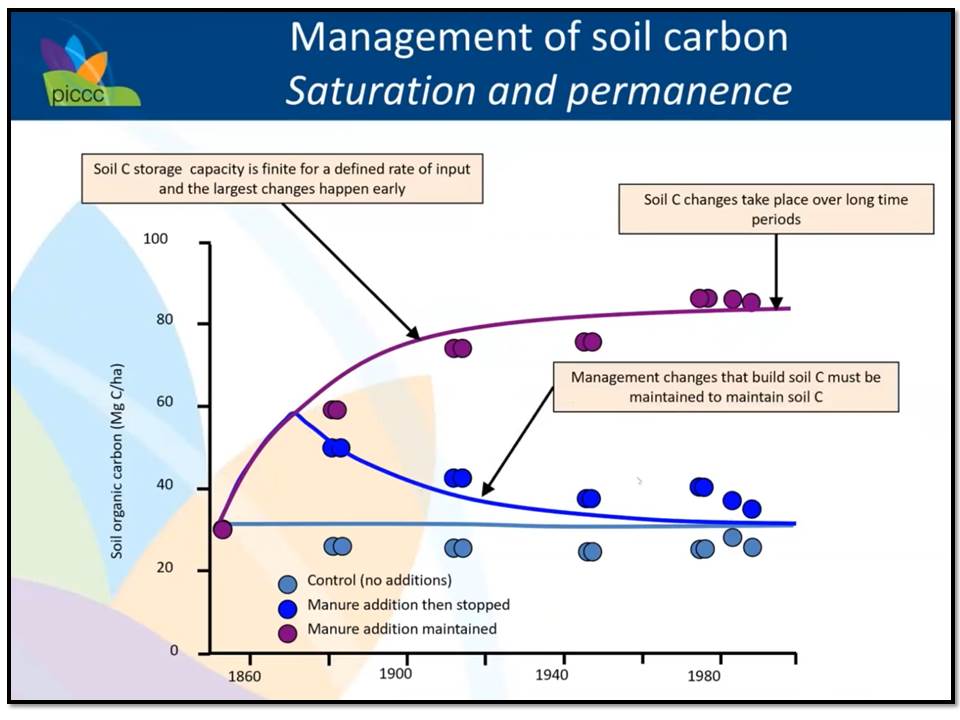
Figure 3: How soil carbon changes under different management strategies in a long-term trial in the UK. Source: Richard Eckard webinar October 2019 and Petersen et al. (2005) Soil Biol Biochem 37: 359.
Importantly Eckard and other researchers have found that in perennial pasture zones, soil carbon as an offset may have limited application, in effect it depends where each farm sits on its soil carbon curve. In contrast, ensuring soil carbon is as close as possible to its equilibrium has a range of other useful implications, particularly nitrogen mineralisation and soil water holding capacity which provide more valuable outcomes for a grazing system.
The science behind soil carbon saturation and permanence in perennial pastures is at odds with comments made by many soil carbon sequestration advocates within the regenerative agriculture movement. Such advocates see soil carbon sequestration as not only an important component of soil health but as a means to increase farm income through the creation of Australian Carbon Credit Units (ACCUs) purchased either through the federal government’s Emissions Reduction Fund or on the open market.
The problem with these advocates’ suggestions, for soil carbon to fulfil soil health and greenhouse gas sequestration roles, is their failure to nominate the farming and soil status situations under which both might be possible. In other words they fail to identify where a farm’s soil carbon content sits on the curves in Figure 3. The assumption is all farms sit somewhere on the navy blue, grey or pre-1900 maroon curves, so the changes in management they advocate will significantly increase SOC.
For example in Carbon Farmers of Australia November e-newsletter, director Louisa Kiely wrote: “Right up front I will say that I believe earning a Carbon Credit is better for Farmers/Farming and the climate in general. This is because it provides an INCOME which in my mind is far better, and longer lasting than a PREMIUM for your product/process – which is what Farmers and others look for after the process of going Carbon Neutral.”
Kiely subsequently describes her thinking as far as farm income is concerned. A farm business becoming carbon neutral has to sell its holistic outcomes to retailers and seek a premium price for the food and fibre produced. “There are no guarantees” this will happen she wrote. But the farm business earning carbon credits through revegetation and/or soil carbon sequestration can sell the ACCUs to the government or private buyer with “income from seven years to 25 years depending on the method.”
“So, one pathway can give a potential premium and one an income,” she wrote.
In theory this is a good strategy but if SOC plateaus or decreases there are financial consequences and there are significant costs associated with proving the gains in SOC exist and are ongoing.
SOC more elusive
What the science is uncovering is that soil carbon credit income is likely to be far more elusive than many proponents suggest and in perennial pasture regions where cropping is uncommon possibly non-existent. In these situations, Eckard and others are suggesting the holistic, multiple benefit outcomes are likely to be the income drivers.
Even with farm tree revegetation he says the combined multiple benefits are likely to outweigh carbon credits. By multiple benefits he means outcomes such as salinity control, improved biodiversity, improved landscape amenity, shade and shelter for livestock, income diversification (eg timber) and even capital appreciation. For example, he said there is evidence from a study (Polyakov) of farm real estate sales in that 20% tree cover on a property provides a 4% land price premium in some situations.
Jigsaw Farms case study
Evidence for soil carbon credits being more difficult to achieve than is commonly portrayed by some advocates is found in research published in Animal Production Science in 2018 by Natalie Doran-Brown et al. Titled “Offsets required to reduce the carbon balance of sheep and beef farms through carbon sequestration in trees and soils”. Researchers set out to determine the amount of tree and soil carbon offsets needed to balance emissions from high productivity versus low productivity farms.
The case study farms used in the research were the 4900 ha Jigsaw Farms, near Hamilton Vic, which has an annual carrying capacity above 22 dry sheep equivalents (DSE) per hectare per year and the 250 ha Talaheni near Murrumbateman, NSW, with a carrying capacity 6 – 10 dse/ha. Both farms have similar average annual rainfalls of 600 – 675mm but is becoming increasingly variable.
Jigsaw Farms has been studied extensively because of its owners approach to increasing livestock carrying capacity on perennial pastures with Merino sheep, crossbred sheep and beef cattle while planting farm forests over 20% of the farm area. Similarly Talaheni’s owner John Ive a former CSIRO scientist has been monitoring superfine Merino sheep carrying capacity and soil health since 1983 through a range of pasture and revegetation strategies to manage salinity, plant production and climate resilience.
The carbon balance of the farm enterprises was calculated by subtracting the C sequestered in trees and soil from the on-farm and pre-farm emissions. The carbon balance was calculated over 35 years from when the trees were planted to include the peak rate of carbon sequestration in trees, about 25 years after being planted, and to then incorporate declining rates of carbon sequestration beyond 25 years.
The results which stood out from this research were:
* On Jigsaw Farms soil carbon increases were small amounting to 200 tonnes CO2e over the period 2000 to 2014. In contrast trees sequestered an estimated 37,000 tonnes CO2e in the same time.
* The farm remains close, but just below carbon neutral across the three livestock enterprises from 2005 to 2030 at which point tree carbon sequestration reaches its own equilibrium.
* Livestock carrying capacity and area of farm planted to trees were the most important determinants of greenhouse gas status. At livestock carrying capacities below 14 DSE/ha, the property would remain carbon neutral with just 10% trees. With 30% trees and carrying capacity below 14 DSE/ha the carbon balance would remain positive over the long-term.
* Higher carrying capacities, above 14 DSE/ha mean the extra methane (GHGe) produced is increasingly difficult to balance (for 20 years) without a large proportion of the farm devoted to tree plantations, figure 3.
* On Talaheni, where livestock carrying capacity is lower, methane (GHGe) emissions are lower than at Hamilton due soil type and less productive pastures, farm carbon balances were much easier to achieve with lower percentage tree cover planting, figure 3. Tree planting provided the greatest offsets to emissions, with soil carbon contributing to a far lesser extent.
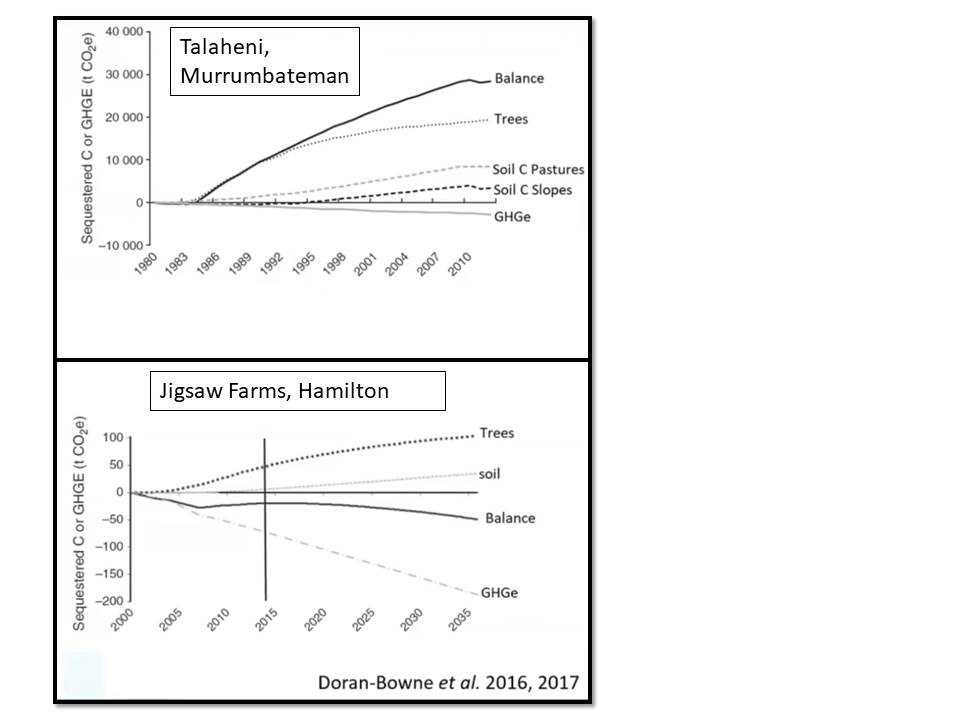
Figure 3: Carbon profiles of Talaheni, Murrumbateman, NSW, and Jigsaw Farms, Hamilton, Victoria, over approximately 30 years. Source: Doran-Brown et al 2016 and 2017.
The results in figure 3 suggest soil carbon is a minor player in achieving carbon neutrality or positivity on farms where perennial pastures exist. But previous farm practice history, annual rainfall, soil types, pasture species present, and livestock carrying capacity are all important factors in determining potential sequestration.
The Doran-Brown paper explicitly commented that other research had determined that “soil carbon levels under the long-term permanent pastures at Hamilton were considered as largely stable.”
Birchip Hamilton case studies
Another piece of relevant research undertaken by Rachelle Meyer et al titled “Process modelling to assess the sequestration and productivity benefits of soil carbon for pasture”, was published in 2015 in the journal Agriculture, Ecosystems and Environment. This research examined the on-farm benefits of building or retaining soil carbon versus its value as a carbon credit (called an Australian Carbon Credit Unit or ACCU which comprise one tonne of CO2e) through the Emissions Reduction Fund (2019 average price around $13/ACCU) or the private credit market (2019 average price around $17/ACCU).
This investigation was based on modelling to simulate pastures with high soil organic matter (SOM) as is achieved under long-term perennial pastures in the Hamilton Victoria district (675mm average annual rainfall) and low soil organic matter as happens under long-term cropping such as in the Birchip, Victoria district (355mm average annual rainfall).
According to Meyer soil with high levels of organic carbon, (as a guide 2% could be high for a sandy soil and 5% high for a clay soil – depends on local conditions and management) generally have better structure, greater water-holding capacity and can provide more nutrients to plants. It’s a typical SOC level (4 – 5%) found in permanent perennial pasture soils across western Victoria and the Hamilton district.
“As we often spend so much time focused on the climate mitigation benefits of soil carbon, the direct benefit that soil carbon has on farmers and the productivity of their lands can be overlooked. High carbon soil is valuable – it leads to an increase in long-term pasture growth and can reduce the need for nitrogen fertilisers. Making sure farmers have this knowledge when making decisions not only directly benefits their production, but also will lead to emissions reductions”, she wrote.
As well Meyer said the modelling study found that switching from cropping to grazing, a change that is consistently associated with increased soil carbon but is also associated with increased methane emissions, resulted in an average soil carbon accumulation less that 0.5 t C/ha/year.
“When two important consequences of retaining or increasing SOC were quantified in nitrogen mineralisation and soil water holding capacity (and there are others such as increased soil permeability, decreased erosion risk and increased microbial biomass contributing to increased supply of plant nutrients other than nitrogen) their value to the farm business was far greater than any achievable carbon credits at current prices. We found that the high-carbon soils on all sites had increased pasture growth due to more nutrients and water being available to plants. We estimate this benefit is worth from $26 to $95 per hectare per year, depending on characteristics of the soil,” Meyer wrote.
According to Eckard this research shows that soils low in organic carbon have potential to increase (SOC) under permanent pasture, but only if rainfall will allow – management has far less influence than rainfall.
“The converse is that soils already high under permanent pasture will not change much, apart from following rainfall patterns i.e. we are losing heaps in this drought all out of our control. But the perverse proponents out there say now is the time to register a soil carbon project, so that when the drought breaks you can claim a carbon credit, because the return of rainfall will allow you to build soil carbon – obtuse thinking, as it was rainfall not your management that made the difference,” he says.
Scientific data on soil carbon sequestration from research conducted in Australia over the last 30 years shows that in both pasture paddocks and cropping paddocks which have depleted SOC levels due mainly to soil tillage over decades, the rate of SOC increase achieved by changing management is less than 1tonne CO2/ha/yr, table 2.
This data was presented by NSW DPI soil scientist Dr Susan Orgill during her “Storing more carbon in your soil” webinar, August 2019. Of particular importance is the time span over which the increases occurred, up to 18 years. She said while there are a range of land management options to increase soil organic carbon levels, the rate at which it happens “may be slow and unspectacular”.
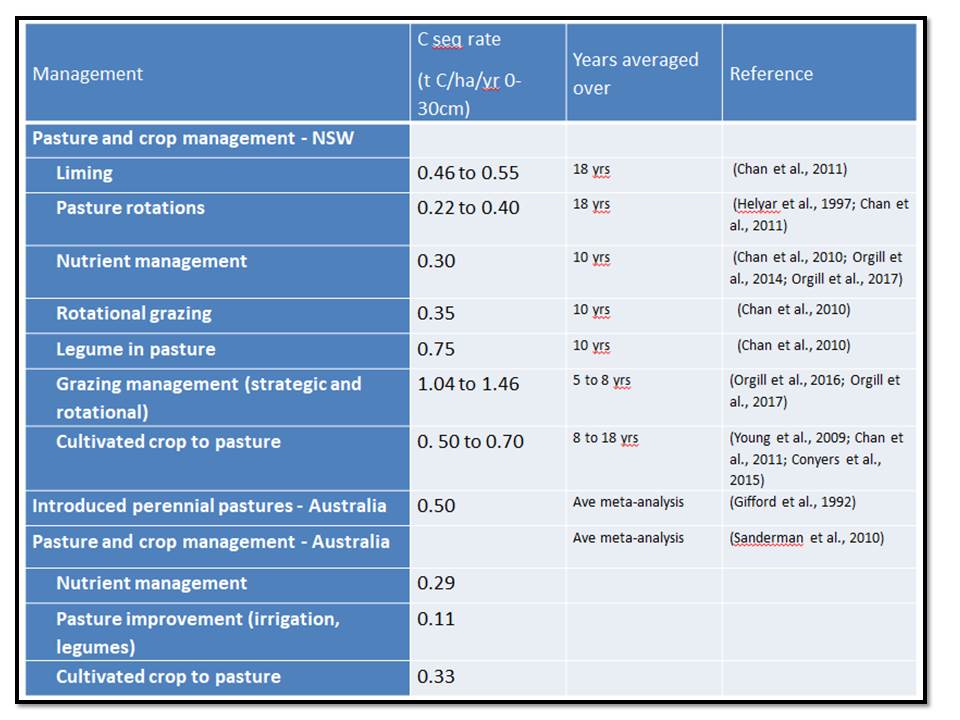
Table 2: Trials conducted in Australia since the 1990’s to demonstrate how management changes influence soil carbon sequestration rates per hectare per year. Source: Dr Susan Orgill, NSW DPI, soil carbon webinar August 2019.
This is reflected in Table 2’s SOC sequestration rates achieved through changing management practices. These trials’ data is in stark contrast to anecdotal SOC sequestration rates quoted by some regenerative agriculture farmers who claim increases in the vicinity of 9 – 11 tonnes CO2e/ha/yr. As well as being much higher than any scientific trials so far reported, these claims do not state the number of years these increases occur over.
Such anecdotal SOC increase figures with no scientific backing or statistical analysis create enthusiasm amongst farmers for entering into soil carbon credit contracts as suggested by Carbon Farmers of Australia’s Louisa Kiely. The scientific data presented by Eckard, Meyer and Orgill shows that farmers changing management to build SOC and capture a financial return via carbon credits are looking at income around $13/ha/yr through the Emission Reduction Fund and around $17/ha/yr through private carbon credit market.
This suggests the greatest incentive for farmers changing management to increase SOC or maintain it when it has reached equilibrium stem from ecosystem services provided by soil carbon and not carbon credits.
It is also interesting to note that much of the commentary about changing farming practices to build soil carbon suggests that the methods are new to agriculture. That is not the case. As tables 1and 2 show many of the trials to investigate the impact of practice change on soil organic carbon commenced in the 1990’s and were long-term so meaningful data about a complex soil characteristic could be generated.
An excellent example is the “Masters” trial which commenced in 1992 and ran for 18 years. It compared the impact of perennial pasture species versus annual pasture species (with and without lime applications) on soil carbon sequestration. According to Orgill this trial demonstrated significant soil carbon sequestration over the entire period, but the amounts average only 0.5t CO2 per ha per year and varied year to year”, figure 4.
This statement is in stark contrast to some made by current “soil carbon” pasture advocates who state that on their anecdotal evidence soil carbon levels increase in one or two years after practice change. In a corporate video, Agri-Prove’s (a carbon project developer) managing director Matthew Warnken, commenting on the Soilkee Renovator working on the inventor’s farm said the machine achieved an 11.2tCO2e (3.1tCarbon) per hectare increase between the base line sampling and the first carbon credit sampling. What’s more in his opinion this result could be replicated on pasture farms across Australia.
Such a statement flatly ignores fundamental biochemical processes impacting SOC, in particular the impacts of soil moisture and temperature.
Sanderman et al in “Soil Carbon Sequestration Potential: A review for Australian agriculture” state that “Given the climatic extremes of much of Australia, year-to-year variability in temperature and especially soil moisture and their effects on decomposition rates may overwhelm any anticipated SOC response to a change in management.” Furthermore they state “Given that climate and physicochemical characteristics of a particular soil exert such overriding controls on overall SOC dynamics, results from one field trial under a particular set of climate and soil conditions may not be applicable to another.”
A similar perspective was provided by University of Melbourne Emeritus Professor Robert White in a May 2019 paper in the journal “Sustainability” when he wrote: “You’d be hard-pressed to find a soil scientist in 2019 willing to roll out a new land management practice using data from one trial at one site. If something works, we need to determine whether it can work in other climates, soil conditions and production systems. We also need to be careful about unintended consequences.”
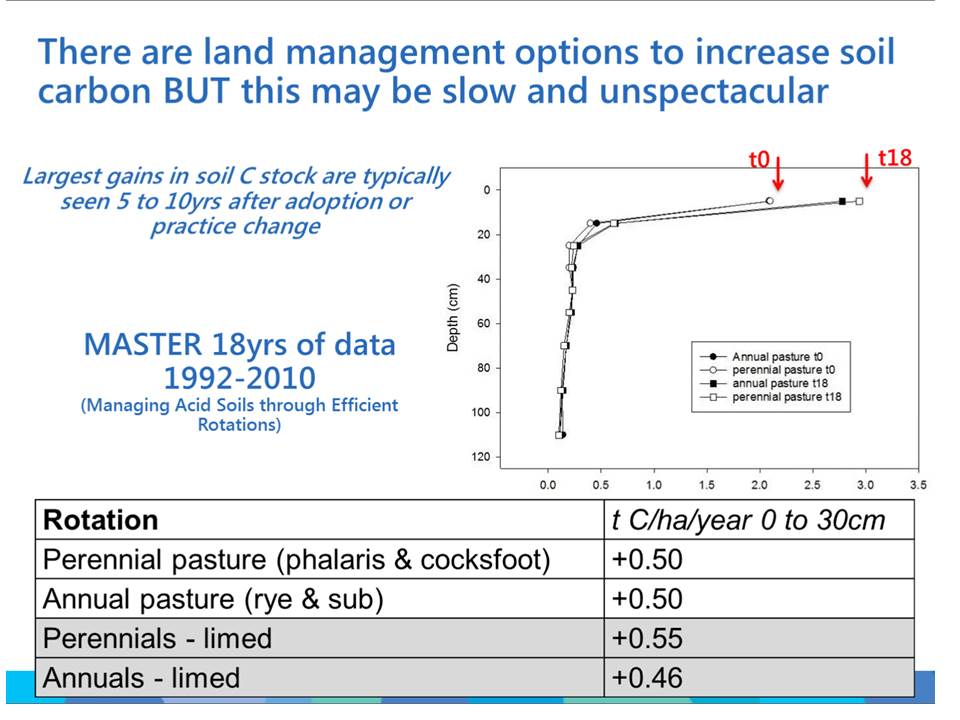
Figure 4: Comparison of impact of annual pasture (AP) versus perennial pasture (PP) with and without added lime (+ or -) on soil organic carbon in the Masters trial, Wagga Wagga NSW, 1992 – 2010. Source: Susan Orgill, NSW DPI webinar December 2018.
The optimistic figures quoted for soil carbon sequestration on the Soilkee inventor’s farm are being used as an argument for carbon project developers to convince farmers to become involved. If the figure quoted by Warnken is anywhere near accurate, it is suggesting a net carbon credit income via the ERF or private market in the vicinity of $65 to $90 per ha per year for possibly 25 years which is the contract period. (The gross figure is closer to $130 to $180 per ha but current soil test costs and broker auditing and administration, plus the mandatory ERF buffer on sequestration cut the returns by up to a half).
Another consideration in soil carbon trading, usually not mentioned by advocates, is that the minimum area under management change for sufficient scale to enter the carbon market is around 800 hectares.
How the scientific data can be so different to claims made by some carbon farmers is difficult to understand given the practices are not new in Australia. In crop farming conservation techniques have been developing for 40 years, with tillage rarely used since the 1990’s. In livestock farming holistic grazing methods and improved feed quality pasture species, have been increasingly adopted since the early 1990’s.
The divergent views around the potential for trading soil carbon credits suggest livestock farmers with perennial pastures need to undertake their own on-property due diligence around soil health indicator trends; monitoring medium to long-term livestock carrying capacity per hectare; propensity for increasing farm tree revegetation percentage; and resilience to climate change. As well, ability to reduce livestock methane emissions per hectare so that livestock farms become greenhouse gas neutral may be on the agenda alongside becoming carbon neutral.
References:
Doran-Browne, NA, Ive, J, Graham, P, Eckard, RJ (2016) Carbon-neutral wool farming in south-eastern Australia. Animal Production Science 56, 417-422. http://dx.doi.org/10.1071/AN15541
Doran-Browne N, Wootton M, Taylor C, Eckard R (2017) Offsets required to reduce the carbon balance of sheep and beef farms through carbon sequestration in trees and soils. Animal Production Science 58(9) 1648-1655 https://doi.org/10.1071/AN16438. http://dx.doi.org/10.1071/AN16438
Done by U I Western Australia – POLYAKOV, Amer. J. Agr. Econ. 97(1): 299–314; doi: 10.1093/ajae/aau053
Meyer R.S., Eckard R.J., Cullen B.R., Johnson I.M. (2015) Modelling to assess the sequestration and productivity benefits of soil carbon in grazing systems. Agriculture, Ecosystems and Environment 213, 272-280. http://dx.doi.org/10.1016/j.agee.2015.07.024

